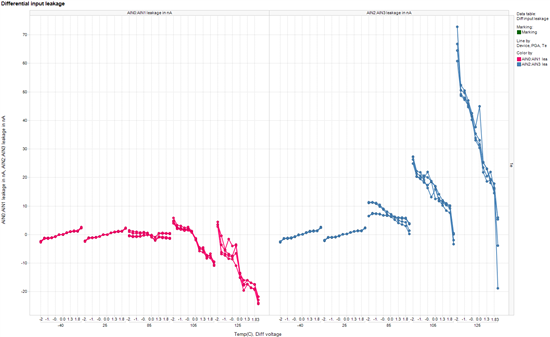Hi,
I got some questions about ADS1120 characteristics as follows,
1. My customer needs the maximum value of differential input current of ADS1120.
They had adjusted manually by 1 piece before.
Now, it is hard because of increasing production.
So, they need to know the maximum value of differential input current.
Could you show me the reference maximum value or dispersion map?
The following are is operating condition.
AVDD = REFP = 4.02V
AVSS = REFN = 0V(AGND)
DVDD = 3.3V.
GAIN =128V/V
2. Seen in the Figure 16~19. Input current vs Input voltage,
Could you tell me that why Input current of AIN2 and AIN3 are large?
I seem that all input terminal are same on block diagram.
Thanks,
Kuramochi


